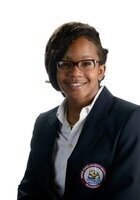All SAT II World History Resources
Example Questions
Example Question #1 : Impact Of Christianity
During the fourteenth century, there were Popes in both Rome and __________.
Seville
Paris
Krakow
Avignon
Genoa
Avignon
In the early part of the fourteenth century, the French King Phillip IV and Pope Boniface VIII clashed over whether or not the clergy should be made to pay taxes to secular authorities without the permission of the Pope. This conflict came to an end when Boniface was captured by French forces and died in the ordeal. To ensure continued papal loyalty, Philip installed a new Pope, Clement V, in the city of Avignon in France. The Papacy would continue to reside in France from 1305 to 1378.
Example Question #2 : Impact Of Christianity
After the Concordat of Worms, bishops in the Holy Roman Empire owed their allegiance to __________.
God alone
the monarch and the Pope
their conscience alone
the monarch
the Pope
the monarch and the Pope
The Concordat of Worms (1122) is generally seen as the end of the first major power struggle between the Papacy and the monarchs of Europe (particularly the Holy Roman Emperor) during the medieval era. Prior to the Concordat, the Emperor and the Papacy had disagreed over who had the right to appoint bishops and other church officials and to whom those officials ultimately owed their loyalty. The Concordat determined that in secular matters, the bishops were loyal to the monarch, but in spiritual matters, were loyal to the Pope. Essentially, bishops now owed allegiance to both the Pope and to the monarch. This is seen as a major turning point in European history—both an important part of the rise of Christianity and a precursor to the emergence of nation states.
Example Question #3 : Impact Of Christianity
John Wycliffe and Jan Hus may be best understood as early precursors of __________.
the Jesuit movement
the Protestant Reformation
the Scientific Revolution
the Age of Exploration
the Great Schism
the Protestant Reformation
John Wycliffe was an English theologian in the fourteenth century who was sharply critical of the Papacy and the abuses of the Catholic clergy. Although Wycliffe died of natural causes, he was posthumously excommunicated, his body dug up and "executed" as a heretic in the fifteenth century, demonstrating the dangers of Wycliffe's writings to the established order of things. Jan Hus was another church reformer, a Czech theologian of the late fourteenth and early fifteenth centuries. He advocated that the Bible should be the guiding force for all Christians and challenged the power of the Papacy. He was executed, a move that sparked the decades long Hussite Rebellion. Both men can be seen as early precursors to the Protestant Reformation that would grip Europe a century later.
Example Question #4 : Impact Of Christianity
The Christian tradition of Scholasticism emerged largely as a result of the writings of __________.
Thomas More
Pope Urban II
St. Augustine
St. Paul
Thomas Aquinas
Thomas Aquinas
The Christian tradition of Scholasticism evolved out of the earlier (and concurrent) tradition of monasticism. It involves marrying Christian ethics and beliefs with an approach to learning focused on reasoning, inference, and questioning. The tradition of Scholasticism grew in prominence in the twelfth and thirteenth centuries, and much of the tradition is based on the writings of the famous Christian philosopher and theologian, St. Thomas Aquinas.
Example Question #5 : Impact Of Christianity
During the Medieval period, it was common for people to pay one-tenth of their income to the church; this payment is known as a(n) __________.
tariff
tithe
petty tax
indulgence
simony
tithe
The tradition of paying one-tenth of one's income to the church comes from the Jewish faith, but was widely accepted in Christianity during the Medieval period and continues to be in some parts of the world today. This payment was known as a "tithe," and all men were expected to pay it.
Certified Tutor
All SAT II World History Resources




